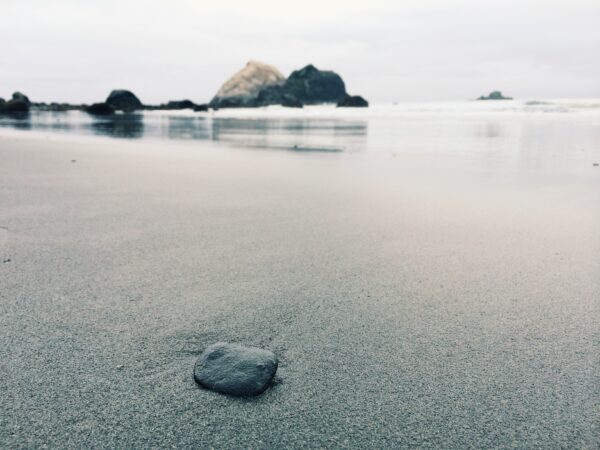Cumberland Council, located in northern England, recently announced a controversial measure: fines of up to £1,000 (about €1,200) for anyone caught removing pebbles and stones from local beaches. Although the decision disappointed many visitors, preserving coastal ecosystems and preventing erosion are crucial reasons for the regulation, several investigations have indicated.
Visiting the beach is an activity that brings back happy memories for many from childhood. However, it is important to remember that sand and pebbles on beaches are not just decorative elements, but essential parts of the habitat that are home to diverse species and provide a natural buffer against the force of sea waves, protecting homes and coastal infrastructure.
Many people usually take a pebble or two as souvenirs, or even fill bags to decorate their gardens. There are also enthusiasts who are fascinated by the variety of pebbles in terms of colours, shapes and even fossils, resulting from the action of ancient glaciers or the erosion of nearby slopes.
However, it is not known that taking material from beaches is illegal in the UK under the Coastal Protection Act 1949, as The Conversation highlights. This legislation was implemented to reduce the historical loss of large amounts of sediment, which had been extracted from beaches for use as building materials.
Certain areas of pebbled beaches in England have legal protection due to their ecological qualities. Natural England designates these areas for the habitats they create and the species that depend on them. For residents near these beaches, the main advantage of pebbles is their ability to reduce coastal erosion and flooding.
The volume of sediment on the beach is essential to its effectiveness in mitigating these risks. The more gravel and sediment on a beach, the greater its ability to absorb wave energy. Excessive removal of gravel, sand, or other sediments reduces the beach’s ability to act as a natural barrier against flooding and erosion.
The volume of sediment changes naturally throughout the year, as the beach adapts to wave changes in different seasons. Waves move pebbles in and out of the beach, organizing them into different areas. During winter storms, strong waves can move larger sediments to the top of the beach, forming a steep ridge of pebbles known as a berm.
The berm at the top of the beach is often the natural first line of defense against storms, absorbing and dissipating wave energy. This reduces the risk of waves overtaking the beach or eroding the protective walls and cliffs.
While one person removing a few stones may not seem like a big deal, the cumulative effect of many people doing the same thing can be significant. Removing gravel can disrupt the natural processes of the beach and unbalance its dynamic state.
Because of the importance of preserving sediment on the beach to protect against flooding and erosion, there is ongoing research to better understand how pebbled beaches respond to waves and storms. This research is necessary to evaluate the effectiveness of artificial pebbles beaches in mitigating the risks of coastal erosion and flooding.
Monitoring sediment transport is critical to advance this research, with emerging technologies and citizen science being used to track sediment eroded from the beach.
In the context of climate change, where flood and erosion risks are becoming more severe and frequent, it is essential to preserve sediments on beaches and allow them to play their natural role in protecting coastlines and habitats. Asking people not to take pebbles from beaches may seem like a small measure, but it is vital to help maintain the effectiveness of beaches in protecting our coastlines.

“Hardcore alcohol maven. Hipster-friendly analyst. Introvert. Devoted social media advocate.”

